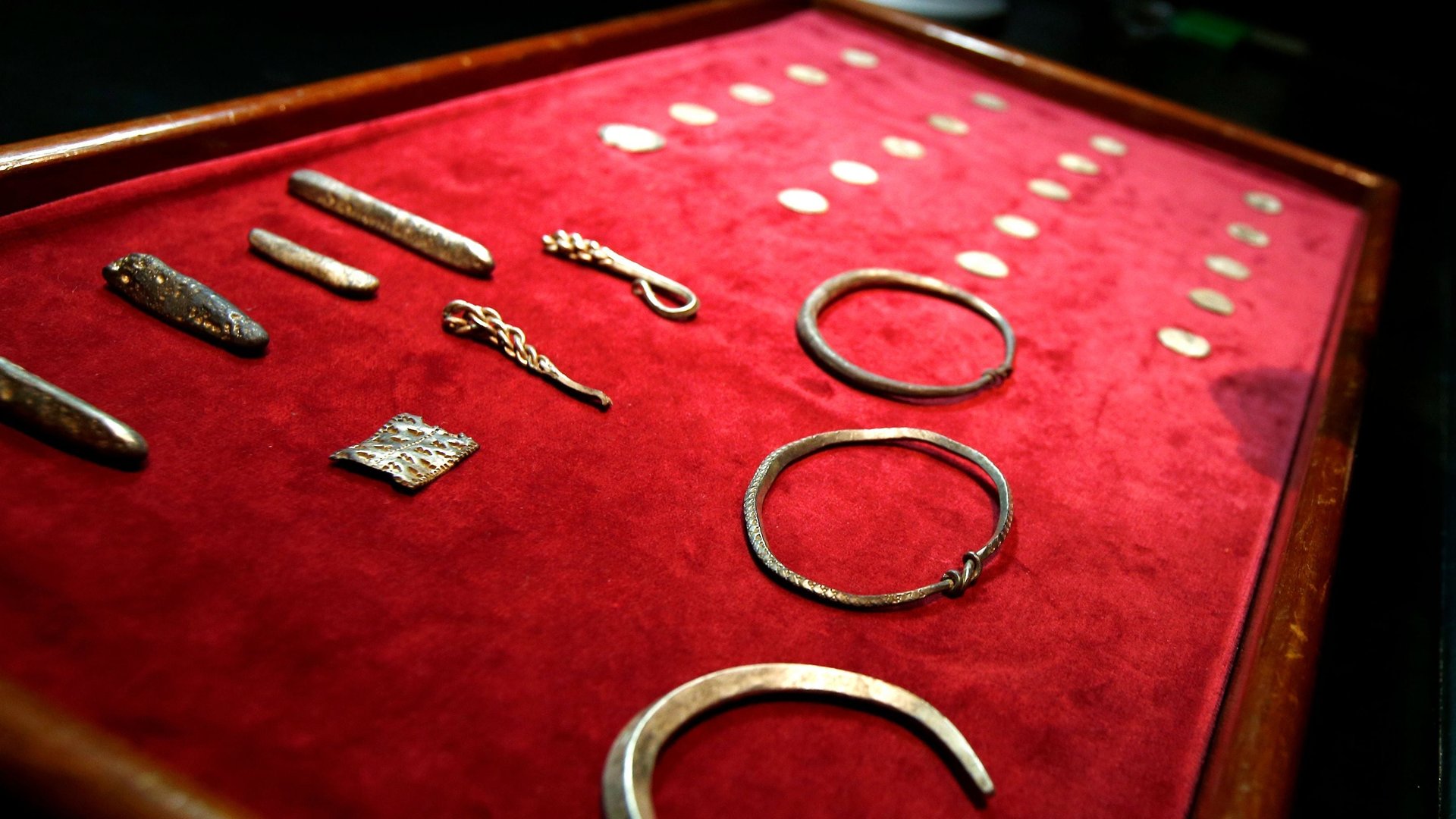Ancient people buried older women with less treasure
Sexism against older women shows up everywhere in contemporary culture—from Hollywood casting tropes to job discrimination. Apparently, this attitude goes all the way back to Anglo-Saxon times. Anthropologists studying graves from between the years 475 and 625 AD in ancient English cemeteries found that young women were buried with more treasure than their older counterparts.


Sexism against older women shows up everywhere in contemporary culture—from Hollywood casting tropes to job discrimination. Apparently, this attitude goes all the way back to Anglo-Saxon times. Anthropologists studying graves from between the years 475 and 625 AD in ancient English cemeteries found that young women were buried with more treasure than their older counterparts.
In a study published in the Journal of Anthropological Archaeology in December 2017, Christine Cave and Marc Oxenham explain that how people are treated in death reflects how they were perceived in life. Upon examining the treasure that people were buried with across three centuries, they found that female graves tended to have high-status objects which represented beauty, such as gemstones, rings, and brooches. Meanwhile, male tombs were filled with tools and artifacts of martial power, like spears, axes, goblets, and tweezers. And while men tended to accumulate more items with increased age, the opposite was true of women. In short, “older women on the whole were shown less respect in death than their male counterparts,” they write. “Aging in Anglo-Saxon England was a gendered process.”
The anthropologists note that the treasures with which women were buried also show that beauty was seen as more important for women than for men: “beauty, for both men and women, declines with age, but only in women is this key identity displayed in the burial ritual.” They also point out that martial ability, like beauty, decreases with age, so the swords and spears in male graves were likely symbolic. But somehow the decline in men’s physical vigor was overlooked.
The discoveries are particularly important because “there are virtually no contemporary textual sources for the period,” the anthropologists explain. “What we can glean about early Anglo-Saxon societies comes directly from the people themselves and is not affected by the conceptions and preconceptions of those able to write about it.”
These cultural biases were not unique to the Anglo-Saxons among people of yore, nor are they buried and gone today. Cave tells Quartz that “most cultures in the past exhibited to some extent this pattern; it is even discernible today, although with perhaps less of the ‘martial’ and more of the ‘strong’ or ‘masculine’ man image being popular.” Men gain power throughout their lives, while in a fundamental misalignment of culture and biology, women reliably outlive men and get scorned for doing so.
Consider a 2016 analysis by Hannah Anderson and Matt Daniels, which counted the number of words spoken by men and women in popular films. Women peaked at age 30, while men kept getting more lines until around 65. As Cave pointed out, popular depictions that suggest women’s worth is tied to their youth are especially dangerous because our movies train audiences and engrain cultural norms for the future.
At least evolution treats women with respect. According to the grandmother hypothesis, women evolved to live past their reproductive years because their presence is essential to enhancing their descendants’ chances of survival. In humans, as well as other species like killer whales, elderly females provide valuable service to their tribes as guides and guardians.
Yet many cultures continue to embrace the Anglo-Saxons’ view. Cave says that by highlighting the long history of gendered stereotypes, her research may help us become more aware of the biases we continue to live with today. “Although there are great improvements in attitudes to issues like equality of the sexes, we can see that these stereotypes are deeply embedded in our psyches and are therefore difficult to shift,” she says. “It is likely to take generations for true equality to happen, but it can, in the end.”